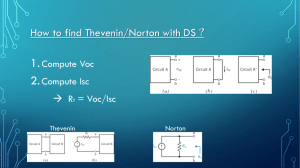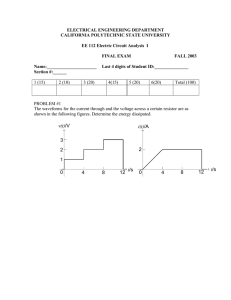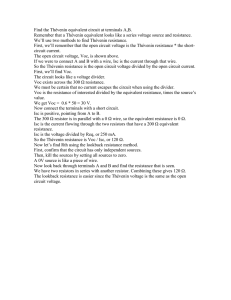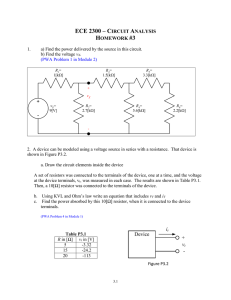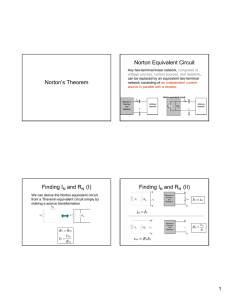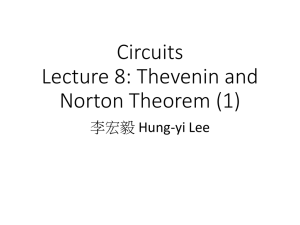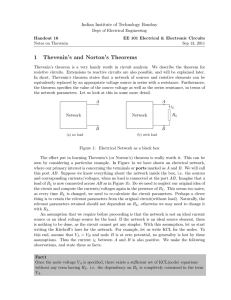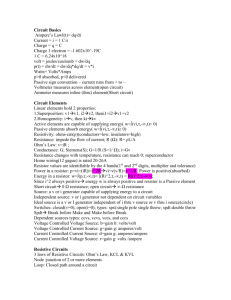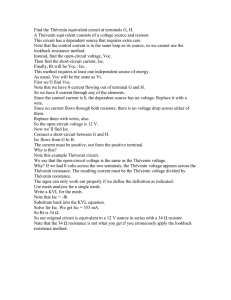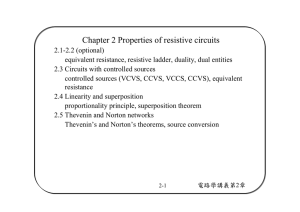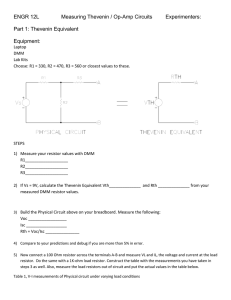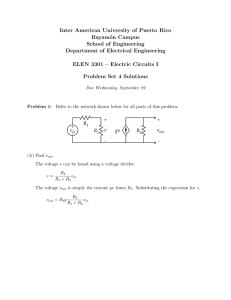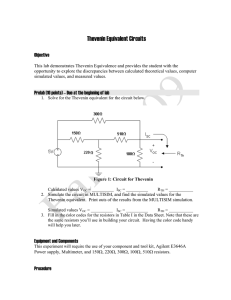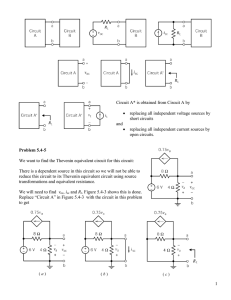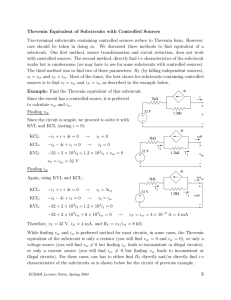Some general comments on finding Thevenin Resistance (Rt):
advertisement
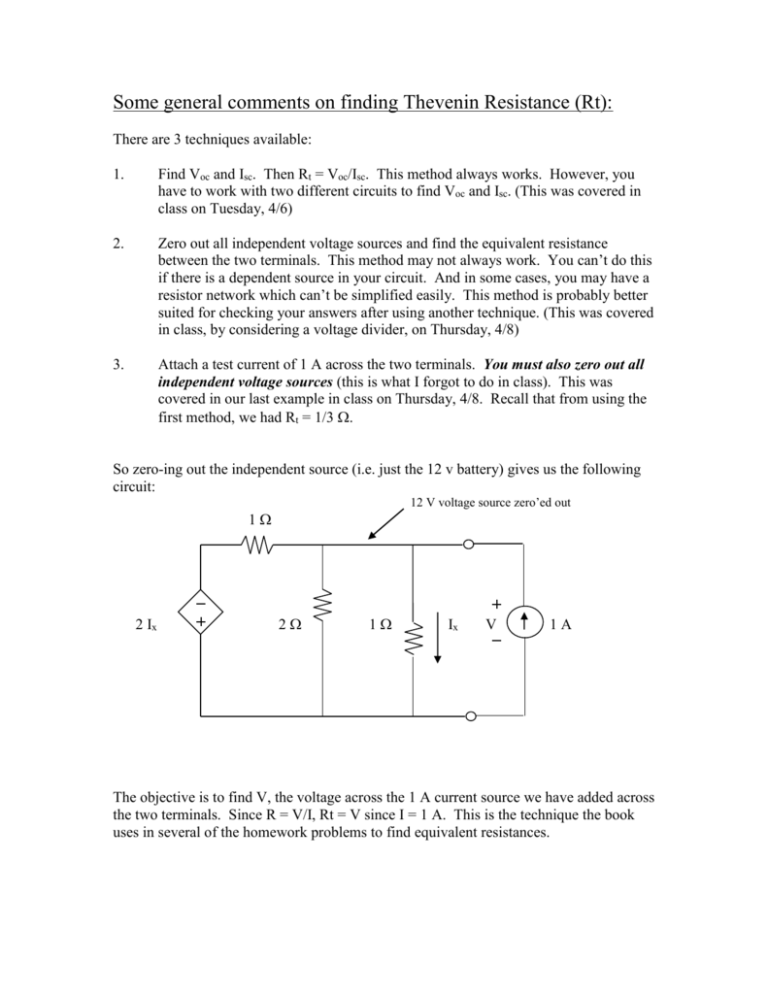
Some general comments on finding Thevenin Resistance (Rt): There are 3 techniques available: 1. Find Voc and Isc. Then Rt = Voc/Isc. This method always works. However, you have to work with two different circuits to find Voc and Isc. (This was covered in class on Tuesday, 4/6) 2. Zero out all independent voltage sources and find the equivalent resistance between the two terminals. This method may not always work. You can’t do this if there is a dependent source in your circuit. And in some cases, you may have a resistor network which can’t be simplified easily. This method is probably better suited for checking your answers after using another technique. (This was covered in class, by considering a voltage divider, on Thursday, 4/8) 3. Attach a test current of 1 A across the two terminals. You must also zero out all independent voltage sources (this is what I forgot to do in class). This was covered in our last example in class on Thursday, 4/8. Recall that from using the first method, we had Rt = 1/3 . So zero-ing out the independent source (i.e. just the 12 v battery) gives us the following circuit: 12 V voltage source zero’ed out 1 2 Ix 2 1 Ix V 1A The objective is to find V, the voltage across the 1 A current source we have added across the two terminals. Since R = V/I, Rt = V since I = 1 A. This is the technique the book uses in several of the homework problems to find equivalent resistances. We can define ground at the bottom of the circuit. Doing so, the upper nodes will have voltages of –2Ix and V (from left to right). We can then write KCL equations at each node. Doing so gets us: KCL at top left node: KCL at top right node: Ia – Ib = 0 Ib + Ic + Ix – 1 = 0 Here, Ia is a current which flows down through the dependent voltage source, Ib is a current which flows to the left through the horizontal 1 resistor, and Ic is a current which flows down through the 2 resistor. Converting these currents into voltages, we have: Ia – (V + 2Ix)/1 = 0 (V + 2Ix)/1 + V/2 + Ix – 1 = 0 Equation (1) Equation (2) So we have two equations, but three unknown variables. This is expected, since there is a dependent source. To generate a third equation, look at where Ix is defined and come up with an equation using “something else”. In this particular case, we use Ohm’s Law: V = 2 Ix (or Ix = V/2) Equation (3) We can substitute this into equation (2). (recall: all we really need to find here is V) Doing so, gives us 1 equation solely in terms of V. V + 2 (V/2) + V/2 + V/2 – 1 = 0 V+V+V–1=0 3V = 1 V = 1/3 So Rt = V/I = 1/3 / 1 = 1/3 , which is what we expect. For additional practice, repeat this problem and put a 1 V test source on the 2 terminals. Then find the current that flows into the circuit (you should get 3 A). Note that the direction of this current is opposite to Isc. Please also note that is only half of the picture when finding Thevenin equivalents. You also need to find Vt, which can only be done by finding Voc via circuit analysis. (i.e. you don’t have a variety of different tools at your disposal there)
